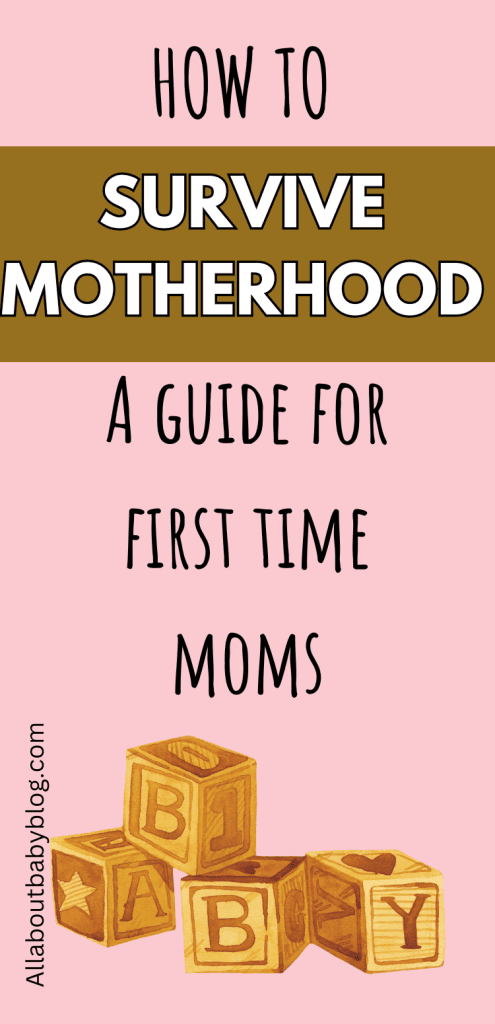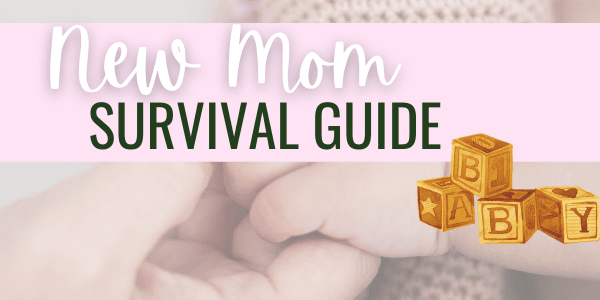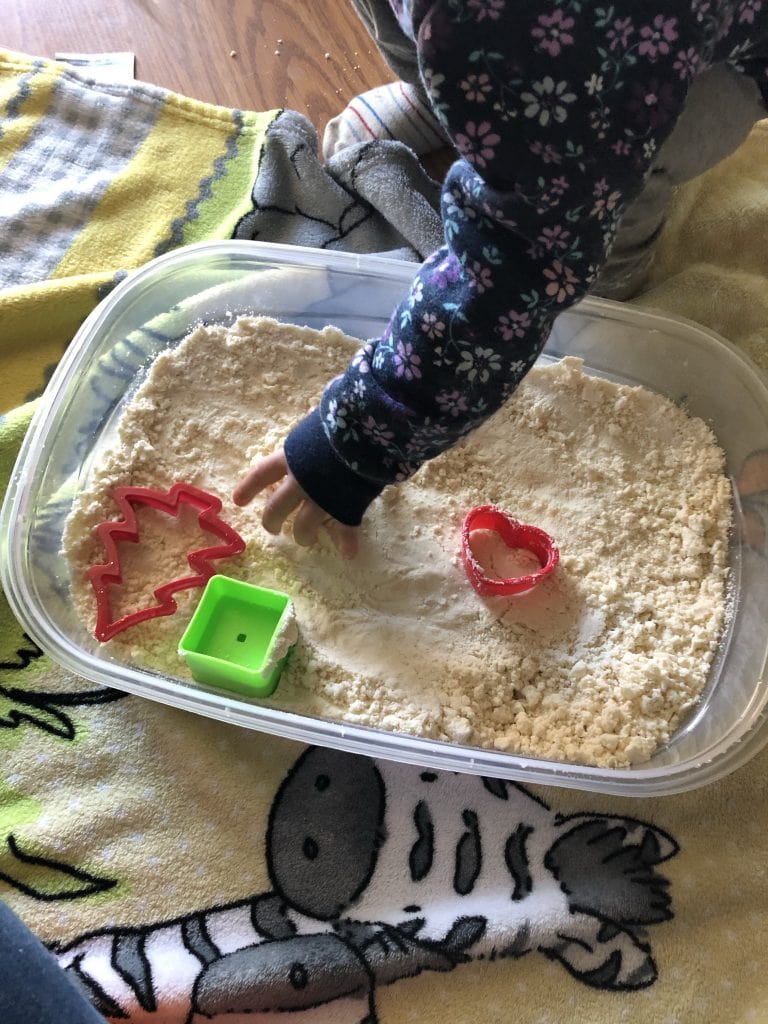The Ultimate New Moms Handbook: Tips for Navigating Motherhood
Motherhood – a journey both ancient and entirely new, presenting a tapestry of challenges and joys unique to each woman. The transition to motherhood is a seismic shift, evoking an instinctual call as old as life itself, yet each experience is flavored with the nuance of personal discovery. You’re about to embark on the most profound of adventures, and preparation can be your compass.
Navigating the uncharted waters of new motherhood requires more than just instinct; it demands preparation, knowledge, and a supportive tribe. From understanding your health insurance details to setting up the perfect nursery nook, this holistic guide has been meticulously crafted to anticipate and address the myriad facets of becoming a new mom. Your expedition into maternity needs an exhaustive map, and these insights serve just that purpose.
In these pages, find a bountiful collection of seasoned advice, grounded in the wisdom of countless journeys yet personalized for your very own odyssey into motherhood. Prepare to enrich your knowledge on everything from crafting a birth plan to managing postpartum recovery. Welcome to ‘The Ultimate New Moms Handbook: Tips for Navigating Motherhood’—your trusted guide through the exhilarating landscape of becoming a new parent.
Preparing for the Arrival of Your Baby
Becoming a first-time mom is an incredibly exciting time, filled with a mixture of anticipation and perhaps a bit of anxiousness. As you embark on this fascinating journey of motherhood, here are some tips to help ensure you are well-prepared for your little one’s arrival.
Before the baby comes, stock up on essential items such as clothing, especially onesies and sleepers suitable for the 0-3 months age range. Diapers are another vital necessity—for those early days, you may find yourself changing more than a few dirty diapers, so consider both cloth and disposable diapers depending on your preference. Ensure you have plenty of feeding supplies, whether you’re planning on breastfeeding or formula feeding. This should include bottles, a breast pump to help maintain milk supply if breastfeeding, and of course, formula if needed.
Ensure you have a comfortable and safe place for your baby to sleep. Investing in a reliable crib is essential for safe sleep practices. Also, consider a changing table and a dresser to keep all those cute baby outfits organized. Don’t forget a quality stroller for when you and your little one are ready to venture outside to soak in some quality time with nature.
Checklists can be incredibly helpful for first-time parents. Create one to ensure you don’t forget any baby essentials. It’s also a good idea to have a range of postpartum supplies ready for yourself to make the days after birth as comfortable as possible. Creating three caddies with essentials—one for baby care products, one for feeding supplies, and one for your postpartum items—is an excellent way to stay organized.
Remember, being prepared isn’t just about having the right items; it’s also about preparing yourself emotionally and mentally for the postpartum period. Take time to read up on expert advice and reach out to your healthcare provider with any questions you may have.
Creating a Supportive Network
New moms understand the importance of creating and nurturing a supportive network. Connecting with other moms can provide both practical advice and emotional support. Having a group of friends or family members to talk to can help maintain your mental health as you adjust to your new role.
Studies show that a strong social support network can significantly impact how you bond with your baby. Deep connections are often forged through simple interactions, such as eye contact during feeding or playtime. However, it’s just as crucial to have a support system in place for yourself, as it can help prevent feelings of isolation and overwhelm.
A lack of social support has been linked to increased stress and a higher risk of mental health issues during the postpartum period. That’s why it’s vital to proactively seek out support groups, whether it’s through local parenting classes, online communities, or even baby showers where you can connect with fellow first-time parents. Building this community will remind you that you’re not alone on this parenting journey, offering a reassuring presence through both the challenges and the joys.
Researching and Choosing a Healthcare Provider
Choosing the right healthcare provider for your newborn is a critical decision that can influence your baby’s early development and overall health. Ideally, this process should begin well before your due date, giving you ample time to conduct research and make an informed decision. Look for a pediatrician or a family healthcare provider who shares your values and has experience with newborns and young infants.
Your provider should be someone you feel comfortable with and one who respects your concerns and preferences. They will be your go-to expert for questions regarding your baby’s growth, feeding, sleep schedule, and developmental milestones, as well as concerns like birth weight and potential birth defects.
Don’t hesitate to schedule interviews or consultations with potential providers. Prepare a list of questions and discuss important topics such as their views on vaccination, breastfeeding support, and strategies to handle common baby issues. You should also inquire about their after-hours services—having access to your provider or a trusted colleague during odd hours can be incredibly reassuring for first-time parents.
Understanding Your Insurance Coverage
Navigating the complexities of health insurance is a crucial step for first-time moms. Understanding your insurance coverage can make a significant difference in managing the financial aspects of the healthcare you and your baby will require. Review your health plan to determine what services and items are covered for both prenatal care and care after your baby is born. This includes checkups with your healthcare provider, the birth itself, and any necessary postpartum care.
Find out if your insurance requires prior authorization for hospital stays or specific procedures. It’s also important to know which local hospitals and pediatricians are within your network to avoid unexpected costs. Additionally, inquire about coverage for essential newborn care such as screenings, vaccinations, and breastfeeding support services.
Always keep paperwork organized and easily accessible. This will facilitate any claims or communications with your insurance provider. If you have questions or face any issues with coverage, reach out to your insurance company as soon as possible to seek clarification or help. Insurance companies often provide expert advice and support throughout your pregnancy and postpartum period, ensuring that the financial aspect is one less concern on your parenting journey.
Taking Care of Yourself during Pregnancy
During the transformative period of pregnancy, self-care couldn’t be more important. First-time moms are often inundated with advice and must-dos, but prioritizing your own health and well-being is essential. Remember to rest when the baby sleeps, accept help from loved ones, and extend the same compassion to yourself as you would to a close friend. This time is just as much about your journey as it is about preparing for your newborn.
While the focus may already be on preparing for the baby, don’t overlook the benefits of embracing naps and quiet moments for your own recovery and resilience. It’s perfectly okay if discerning your little one’s needs isn’t intuitive at first; patience and trusting your instincts go a long way. If needed, seek advice, but remember that finding what works for your family might take time, and that is completely normal.
Eating a Balanced and Nutritious Diet
Nutrition plays a pivotal role in the health of both mom and baby before, during, and after pregnancy. As a new mom, the goal is to support your healing process and provide the best nutrition possible if you choose to breastfeed. This includes eating a diverse diet packed with vitamins and minerals. Lean proteins, whole grains, fruits, vegetables, and healthy fats should form the base of your meals. Remember, your caloric needs increase during this phase, so it’s not the time for dieting but rather for nourishing your body with wholesome, nutritious food.
Keep in mind that hydration is essential, especially post-pregnancy, as your body works to shed excess fluids. A simple tip is to drink a glass of water every time you feed your baby, ensuring you stay hydrated throughout the day and night.
Staying Active and Engaging in Gentle Exercise
Pregnancy and birth can take a physical toll on your body. It’s important to stay active, but be gentle with yourself. Light exercises like walking, prenatal yoga, or swimming can strengthen your muscles, improve circulation, and boost your mood. However, always consult your healthcare provider before beginning any new exercise regimen to ensure it’s safe for you and your baby.
Practicing Relaxation Techniques and Self-Care
Amidst the excitement and sometimes chaos of becoming a new parent, finding time for relaxation is key. Simple techniques such as deep breathing exercises, meditation, or even a warm bath can ease stress and help maintain mental health. Set aside time for activities that make you feel good, whether that’s reading a book, crafting, or unwinding with a favorite show.
Incorporate self-care routines into your day. It could be a few minutes of skincare, a quick stretch, or simply sitting down with a cup of herbal tea. Remember, caring for yourself is not selfish; it empowers you to be the best mom you can be.
Bear in mind that the journey of motherhood is unique for everyone, and what works for others may not work for you. Trust your instincts, and don’t hesitate to reach out to your support network or healthcare provider if you’re unsure about anything. Your well-being is the foundation of your family’s happiness.
Educating Yourself about Birth and Postpartum
For first-time parents, it’s an exciting time, but also one filled with uncertainty. Education is a powerful tool when embarking on the journey of motherhood, particularly as you approach your due date and the subsequent days after birth. Nearly 80% of new mothers experience some level of emotional upheaval, commonly known as the baby blues, soon after their baby arrives. Symptoms can persist for a couple of weeks and are part of the body’s natural response to the hormonal and lifestyle shifts that accompany childbirth.
Recognizing and managing the symptoms of anxiety or depression during the postpartum period is a crucial piece of advice for nurturing not just your newborn’s health but your own mental health as well. A recommended best practice is to prearrange a comprehensive six-week postpartum check-up with your healthcare provider. This visit allows for an assessment of your physical recovery, emotional well-being, and adaptation to motherhood.
Gathering a wealth of information about postpartum care can significantly smooth this transition. Expert advice suggests reading up on postpartum needs and the importance of self-care during this time. Additionally, seeking insight from healthcare professionals should not be underestimated as you navigate through the early stages of your postpartum journey.
Attending Childbirth and Parenting Classes
When it comes to childbirth and the early parenting journey, knowledge can provide a strong sense of empowerment and assurance. Childbirth and parenting classes are available for expectant mothers and partners to help develop a comprehensive understanding of the labor process, baby essentials for the first few months (0-3 months), and initial strategies for parenting.
These classes usually cover a variety of topics, such as what to expect during labor and delivery, effective pain management techniques, the basics of breastfeeding, and strategies for setting a sleep schedule for your newborn. They also touch on the importance of safe sleep practices to reduce the risk of birth defects and how to recognize normal birth weight and growth patterns. Doing so with other first-time parents can also help in building a support community who understands what you’re going through.
Reading Books and Online Resources
Information is often most accessible and abundant in books and online resources. In today’s digital age, a plethora of knowledge about baby care products and parenting techniques is at your fingertips. When scouring resources, make sure they offer the latest, evidence-based information that aligns with the advice from your health care provider.
A variety of books and websites are dedicated to topics such as the stages of labor, breastfeeding journey, postpartum care, newborn care, and creating deep connections with your child through eye contact and other bonding experiences. Online forums and parenting blogs can also provide advice on what to expect in the first few months after your baby is born.
Seeking Advice from Experienced Moms
Often, the most intimate and practical insights come from those who have recently walked the path you’re on: experienced moms. They can offer firsthand expertise ranging from the best postpartum supplies for managing a dirty diaper to whether disposable diapers or cloth diapers work best for nighttime changes.
Conversations with those who have embarked on their parenting journey before you can provide both a comforting ear and invaluable recommendations. However, it is important to remember that while their piece of advice comes from a place of experience, every baby and parenting situation is different. Use their suggestions as guidance, but continue to trust your instincts and the advice of your healthcare provider.
As you weave through the advice, classes, and resources available, remember that this is your unique path. Balance education with instinct, and don’t forget to enjoy the quality time during this incredible chapter of life.
Setting Up the Nursery and Gathering Essential Items
Designing your baby’s nursery is a personal and enjoyable part of preparing for your bundle of joy. Begin with choosing a room that is quiet, well-ventilated, and can maintain a comfortable temperature. Within this space, you’ll focus on creating a safe sleeping area, a convenient spot for changes, and storage for all of your baby essentials.
When gathering items, think about what tasks you’ll be performing in the nursery. For changing diapers and clothing, secure a changing table stocked with postpartum supplies, as well as easily reachable clean diapers, wipes, and spare clothes. Consider installing a comfortable rocking or armchair for those precious moments of breastfeeding and bonding.
Must-Have Nursery Checklist:
- Crib or bassinet
- Crib mattress
- Changing table
- Diaper pail
- Comfortable chair
- Storage for clothes and baby care products
- Baby monitor
- Nightlight or soft lighting options
Creating a checklist like this can help ensure you don’t forget any of the nursery essentials. Next, let’s delve into picking the perfect crib and mattress.
To make sure you don’t forget any of the essentials check out this post about Nursery Must haves.
Choosing the Right Crib and Mattress
The safety of your baby during sleep time is paramount, and it starts with the selections you make for their crib and mattress. Look for a crib that meets current safety standards set by authorities such as the Consumer Product Safety Commission (CPSC). The slats should not be more than 2 3/8 inches apart to prevent your baby’s head from getting stuck. It’s often advisable to choose a new crib over a secondhand one, as an older crib may not meet current safety regulations.
For the mattress, select one that fits snugly within the crib frame without any gaps. The mattress should be firm to reduce the risk of SIDS (Sudden Infant Death Syndrome) and covered with a fitted sheet. A waterproof mattress protector is also recommended to prolong the life of the mattress and for ease of cleaning.
Stocking Up on Baby Clothes and Diapers
Planning your baby’s wardrobe and ensuring you have a stash of diapers at the ready is essential. For clothing, it’s practical to have a selection of onesies, sleepers, and comfortable outfits. Considering the astonishing number of diapers your baby will go through, it’s wise to stockpile a variety in sizes 0-3 months to begin with. Newborns can use eight to twelve diapers a day, so you won’t want to run out!
Remember to choose baby clothes and diapers that cater to the sensitivity of a newborn’s skin. Look for soft, breathable fabrics and hypoallergenic diaper brands.
Basic Baby Wardrobe and Diaper Inventory:
- Onesies (6-8)
- Sleepers (6-8)
- Socks or booties (4-6 pairs)
- Newborn hats (2-3)
- Swaddle blankets (3-4)
- Cloth or disposable diapers (1-2 week supply)
Selecting Safe and Age-Appropriate Toys
Infants can benefit greatly from stimulating toys that promote their development. Always choose toys that are age-appropriate and are free from small parts that could pose a choking hazard. For newborns, mobiles, soft plush toys, and high-contrast black and white visual stimulators are ideal.
Toys that encourage interaction, such as soft books with various textures or simple rattles, can help in creating those deep connections as you play and explore together. Ensure that any toy you choose bears the appropriate safety markings and is made of non-toxic materials.
Remember, the best toy for your baby, especially in the 0-3 months age range, is your face and voice – engaging with your child through play and eye contact is invaluable for their social and emotional development.
Creating a Birth Plan
Creating a birth plan can feel like a significant step in your parenting journey, setting expectations and expressing your preferences for the big day. A birth plan is essentially a written document that informs your healthcare provider and birthing staff about your wishes for labor, delivery, and postpartum care. It’s crucial to keep the plan flexible, as birth can be unpredictable, but having a guide can also provide peace of mind.
When crafting your birth plan, consider items such as who you want present during the birth, what pain management techniques you’re interested in, and even the atmosphere you desire in the delivery room, like lighting and music. Also, think about practicalities like how you want to handle birth interventions and your preferences for feeding the baby. Create your plan in consultation with your health care provider to ensure it’s realistic and can be accommodated by the birthing facility.
Make sure to use this free birth plan template.
Discussing Your Preferences with Your Healthcare Provider
It’s vital to discuss your birth plan preferences with your healthcare provider well before your due date. They can offer expert advice on what may or may not be possible or advisable given your personal health and birth circumstances. Schedule a dedicated appointment to walk through each point of your plan, understanding the medical implications and alternatives that may be necessary should complications arise.
Remember that the ultimate goal is the safety and health of both you and your baby, but your comfort and mental health are also important. Include your desires for things like skin-to-skin contact immediately after birth, whether you intend to try breastfeeding right away, and any concerns you have about the labor and delivery process.
Including Your Partner or Support Person in the Plan
Your partner or support person can play a crucial role in your labor and delivery, so it’s important to include them in your birth plan discussions. They should be aware of your wishes and ready to advocate for you when you’re occupied with the task of giving birth. Discuss each aspect of your plan together and make sure they are comfortable with their expected role, whether it’s providing emotional support, helping with breathing exercises, or speaking to the medical team on your behalf.
Ensure they know how to assist you with pain management techniques you’ve chosen, and discuss any signs or phrases you will use to communicate if you need more support or wish to change your pain management plan.
Researching Pain Management Options
Pain management is a significant component of your birth plan. Spend time researching and understanding the various options available, from natural methods like breathing exercises, baths, and massages to medical interventions such as epidurals or pain-relief medications. It’s useful to consider the pros and cons of each and discuss them with your healthcare provider to understand what’s best for your situation.
Some pain management methods may impact your mobility or your baby’s heart rate, which can influence the course of your labor and delivery. Detailed knowledge of your options will help you make informed decisions and set realistic expectations for your experience.
Considering Your Birth Location and Environment
The environment where you give birth can influence your labor experience. Take the time to consider whether you would prefer a hospital setting, birthing center, or a planned home birth, bearing in mind the amenities and support each location offers. If you choose a hospital or birthing center, inquire about taking a virtual or in-person tour, so you can familiarize yourself with the place before the big day.
Think about the atmosphere you want to create — dim lighting, specific music, or quiet can impact your comfort level. Some facilities may offer different amenities, such as birthing pools or the ability to move freely during labor. Your birth plan should communicate your preferences clearly, so your care team knows what environment will help you feel calmest and most supported.
Packing Your Hospital Bag
Packing your hospital bag is an exciting milestone in the journey of motherhood, signaling that the day you meet your baby is near. The key is to pack early, ideally by the time you’re 34-36 weeks along, to ensure you’re ready for the big day, as babies can be unpredictable with their arrival. A well-prepared hospital bag can make your stay more comfortable and reduce stress during this transformative time.
Essentials for You, Your Partner, and Baby
You:
- ID and insurance information: Essential for hospital admission.
- Birth plan: Helps convey your preferences to the medical team.
- Comfortable clothing: Think loose-fitting gowns or pajamas, and a robe.
- Nonskid socks or slippers: Keeps you warm and prevents slips.
- Toiletries: Basics like a toothbrush, toothpaste, deodorant, and face wash.
- Postpartum supplies: Include maternity pads, nursing bras, and nipple cream.
- Snacks and water bottle: Keep energy up and stay hydrated.
Partner:
- Change of clothes: Fresh outfits for longer stays.
- Entertainment: Books or games to pass the time.
- Chargers: For phones and other electronics.
- Camera or smartphone: Capture those first precious moments.
Baby:
- Outfits: Several onesies and sleepers sized for 0-3 months.
- Blankets: Swaddling and receiving blankets to keep the baby warm.
- Car seat: Ensure it’s properly installed in advance.
Important Documents and Contact Information
Be sure to include the following documents and information:
- Pre-registration forms: If your hospital offers pre-registration, complete the necessary forms to save time on arrival.
- Emergency contacts: A list of numbers for family or friends to be notified.
- Pediatrician information: The hospital will need this to send birth records and arrange follow-up care.
- Advance Directives: If you have them, so that the hospital can honor your care preferences.
Comfort Items to Make Your Hospital Stay More Pleasant
Bringing items from home can provide great comfort during your stay:
- Pillow: With a recognizable pillowcase, to help you rest easier.
- Blanket: A throw blanket for a touch of home comfort.
- Music playlist: Soothing or favorite tunes can help calm and distract during labor.
- Books or magazines: Light reading material for relaxation and passing the time.
- Massage oil or lotion: May help with pain relief and relaxation.
- Photos or mementos: Personal touches to remind you of loved ones and promote positivity.
Formatting Guidelines
- For a handy checklist:Essentials for:Item:YouComfortable clothing, toiletriesPartnerChange of clothes, entertainmentBabyOnesies, car seat
- For a simple list:Important Documents:
- ID and Insurance Information
- Pre-registration Forms
- Emergency Contacts
- Pediatrician Information
Remember, while it’s tempting to pack everything but the kitchen sink, focus on the essentials that will support your comfort, the baby’s needs, and the practicalities of medical requirements and documentation. The less clutter, the easier it is to find what you need, when you need it.
Managing Postpartum Recovery
The postpartum period brings with it a medley of physical and emotional transitions as well as a steep learning curve in the parenting journey. For first-time moms, it’s important to approach this time with patience and an understanding that healing and adjustment can take time. It’s a period characterized by the body returning to its pre-pregnancy state and the added responsibilities of taking care of a newborn. Keeping in close contact with your health care provider is key, as they offer expert advice and can help monitor your recovery and mental health.
Understanding the Physical and Emotional Changes
After the excitement of childbirth, first-time moms can experience a range of physical and emotional changes. Physically, it’s common to deal with postpartum symptoms such as vaginal soreness, uterine contractions, and changes in birth weight. Emotionally, it’s an equally transformative time. Many new moms experience a roller coaster of joy, anxiety, and potentially the baby blues or more serious mood disorders like postpartum depression. It’s crucial to acknowledge these feelings and seek support from loved ones or a mental health professional. Here are some tips to help manage these changes:
| Physical Changes | Emotional Changes |
|---|---|
| Engage in gentle exercise like walking | Talk about your feelings with someone you trust |
| Use recommended postpartum supplies | Rest when your baby sleeps to combat fatigue |
| Monitor your body for signs of complications | Seek professional help if emotions feel overwhelming |
Taking Care of Your Incision (if applicable)
If your journey of motherhood included a cesarean delivery, taking care of the incision is a significant part of the recovery process. Protect the area by keeping it clean and dry, and follow your health care provider’s instructions on how to bathe and care for your incision. During the first few days after birth, minimize movement that puts pressure on the area, and promptly report any signs of infection, such as redness, swelling, or oozing, to your provider. Consider these guidelines:
- Inspect the Incision: Daily checks for signs of infection.
- Proper Hygiene: Gentle cleaning as directed by your health care provider.
- Comfortable Clothing: Loose-fitting attire to avoid irritation.
Prioritizing Rest and Sleep
For first-time parents, adjusting to a new sleep schedule—or the lack thereof—can be a challenge. Rest is essential for healing, and though it may seem elusive, it’s crucial to safe sleep for both mom and baby. To boost your chances of getting sleep, try to sync your sleep schedule with your baby’s and accept help from others to take care of the baby while you rest. Creating a peaceful sleep environment and sticking to a routine can also promote better sleep. Consider the following:
- Nap Opportunities: Take naps when the baby sleeps to replenish energy.
- Sleep Assistance: Share nighttime duties with your partner if possible.
- Relaxing Atmosphere: Dim lights and soft sounds to encourage sleep.
Short, manageable routines and ensuring the baby’s sleep environment is safe, adhering to guidelines for safe sleep to reduce the risk of birth defects and SIDS, can keep both you and your baby healthy and rested.
Remember, recovery takes time, so giving yourself grace and space to adjust during this period is crucial for both your physical health and mental well-being. Seek nutritious food, create deep connections with your baby through eye contact and touch, and don’t hesitate to reach out for help during the first few months after birth.
You got this!








